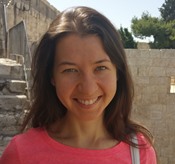Program Information
A Comparison of Two Si Detectors for in Vivo Dosimetry
O Talarico*1, T Krylova2 , I Lebedenko2 , (1) National Research Nuclear University "Mephi", Moscow, Russia, (2) Russian Research Cancer Center, Moscow, Russia
Presentations
SU-F-T-322 (Sunday, July 31, 2016) 3:00 PM - 6:00 PM Room: Exhibit Hall
Purpose:To compare two types of semiconductor detectors for in vivo dosimetry by their dependence from various parameters in different conditions.
Methods:QED yellow (Sun Nuclear) and EDP (Scanditronix) Si detectors were radiated by a Varian Clinac 2300 ix with 6 and 18 MV energies. 10 cm thickness water equivalent phantom consisted of 30x30 cm2 squared plates was used for experiments. Dose dependencies for different beam angles (0 – 180°), field size (3-40 cm), dose (50 – 300 MU), and dose rates (50 – 300 MU/min) were obtained and calibrated with Standard Farmer chamber (PTW).
Results: Reproducibility, linearity, dose rate, angular dependence, and field size dependence were obtained for QED and EDP. They show no dose-rate dependence in available clinical dose rate range (100-600 MU/min). Both diodes have linear dependence with increasing the dose. Therefore even in case of high radiation therapy (including total body irradiation) it is not necessary to apply an additional correction during in vivo dosimetry. The diodes have different behavior for angular and field size dependencies. QED diode showed that dose value is stable for beam angles from 0 to 60°, for 60-180° correction factor has to be applied for each beam angle during in vivo measurements. For EDP diode dose value is sensitive to beam angle in whole range of angles.
Conclusion:The study shows that QED diode is more suitable for in vivo dosimetry due to dose value independence from incident beam angle in the range 0-60°. There is no need in correction factors for increasing of dose and dose rate for both diodes. The next step will be to carry out measurements in non-standard conditions of total body irradiation. After this modeling of these experiments with Monte Carlo simulation for comparison calculated and obtained data is planned.
Contact Email:

